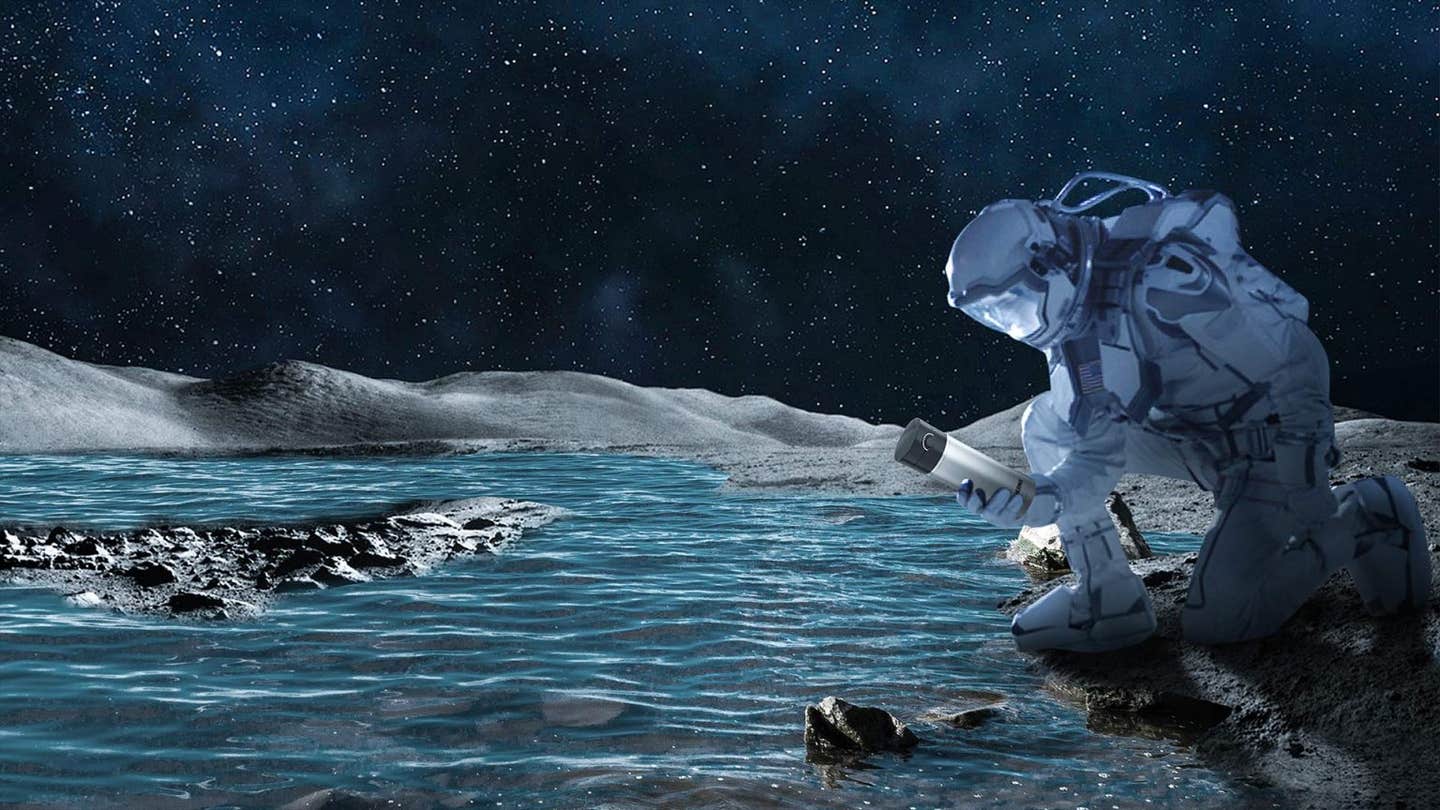Scientists develop plan for massive water production on the moon
Lunar research uncovers how heating lunar regolith can generate enough water to support future lunar missions. This discovery is key for long-term habitation.

By reacting lunar regolith with hydrogen implanted by the solar wind, they found a way to generate water in large quantities. (CREDIT: CC BY-SA 3.0)
Water is essential for human survival on the Moon, making its exploration and extraction a top priority for scientists. A research team led by Prof. WANG Junqiang from the Ningbo Institute of Materials Technology and Engineering (NIMTE) at the Chinese Academy of Sciences (CAS) has recently proposed a breakthrough method for producing significant amounts of water on the Moon.
By reacting lunar regolith with hydrogen implanted by the solar wind, they found a way to generate water in large quantities, potentially paving the way for sustained human presence on the lunar surface.
Over the years, lunar exploration missions such as the Apollo program and China’s Chang’E-5 mission have confirmed the presence of water on the Moon. However, the actual amount of water contained within lunar minerals is minimal, ranging from 0.0001% to 0.02%. Extracting this scarce water for human use has been a major challenge for researchers.
In their latest study, Prof. Wang’s team tackled this issue head-on by working with lunar regolith samples returned by the Chang’E-5 mission. These samples were key to investigating how water could be produced directly on the Moon.
Related Stories
“We used lunar regolith samples brought back by the Chang’E-5 mission in our study, trying to find a way to produce water on the Moon,” said WANG, explaining the crucial role these samples played in their research.
The team discovered that heating lunar regolith to temperatures above 1,200 K using concave mirrors could trigger a reaction that generates water. Their results showed that just one gram of molten lunar regolith could produce between 51 to 76 milligrams of water.
On a larger scale, one ton of lunar regolith could generate more than 50 kilograms of water—equivalent to around 100 bottles of drinking water. This amount could provide enough drinking water for 50 people for a single day.
The research also highlighted the role of ilmenite (FeTiO3), one of the primary minerals found in lunar regolith. Ilmenite, with its unique lattice structure, was found to contain the highest concentration of hydrogen implanted by solar wind. This hydrogen is crucial for the water production process. When lunar regolith is heated, the hydrogen stored within these minerals reacts, releasing water.
Not only does this discovery present a solution for obtaining drinking water on the Moon, but the potential applications extend further. The water produced from lunar regolith could be used for irrigation, supporting plant life in future lunar habitats. Additionally, it could be electrolyzed to separate hydrogen and oxygen. The hydrogen could serve as a fuel source, while the oxygen would be vital for breathing, making this discovery a game-changer for future lunar exploration and habitation.
In-situ resource utilization, or using materials already present on the Moon, is seen as a key to reducing the costs and logistical challenges of long-term lunar missions. If future lunar bases can rely on locally sourced water, astronauts wouldn’t need to bring large amounts of water from Earth, drastically reducing the cost of space travel and making sustained exploration more feasible.
The implications of this study are significant, not just for the possibility of human settlements on the Moon, but also for the construction of future lunar research stations. With reliable water sources, the Moon could become a hub for scientific discovery, space tourism, or even as a stepping-stone for missions further into the solar system, such as Mars.
While challenges remain in scaling up this process for practical use, Prof. Wang’s research offers a promising glimpse into how humans could one day sustain themselves using the Moon’s resources. As the quest for water on the Moon continues, this study provides pioneering insights into one of the most critical factors for human survival in space.
The results of this groundbreaking research were published in The Innovation, marking a major step forward in lunar resource utilization and water production technology. As space agencies and private companies alike look toward establishing a human presence on the Moon, advancements like these bring us closer to making that vision a reality.
Note: Materials provided above by The Brighter Side of News. Content may be edited for style and length.
Like these kind of feel good stories? Get The Brighter Side of News' newsletter.
Joshua Shavit
Science & Technology Writer | AI and Robotics Reporter
Joshua Shavit is a Los Angeles-based science and technology writer with a passion for exploring the breakthroughs shaping the future. As a contributor to The Brighter Side of News, he focuses on positive and transformative advancements in AI, technology, physics, engineering, robotics and space science. Joshua is currently working towards a Bachelor of Science in Business Administration at the University of California, Berkeley. He combines his academic background with a talent for storytelling, making complex scientific discoveries engaging and accessible. His work highlights the innovators behind the ideas, bringing readers closer to the people driving progress.



